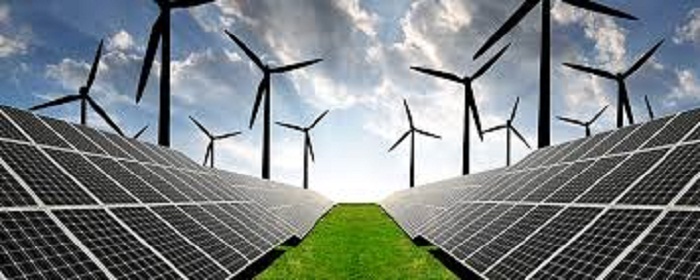Cape Verde has set itself a very bold renewable energy target. It has pledged to obtain 100% of its electricity from renewable resources by 2025. This is part of its ‘sustainable energy for all’ agenda.
Cape Verde is made up of 10 islands, nine of which are inhabited, that lie about 600km west of Senegal. Almost all of the islands’ 550,000 residents have access to electricity, but about one-third still rely on firewood and charcoal for cooking. Cape Verde’s per capita electricity consumption of 727 kWh per person per year is substantially higher than the sub-Saharan Africa average of 488 kWh per person per year. But electricity prices are high. They range from US $0.26 – US $0.32 in recent years compared, for example, to an average of US$0.13 for residential homes in the US.
Also read:Wind investment in Egypt to come to fruition in 2019
Although most of its electricity is produced by generators, which run on imported petroleum products, Cape Verde has started to diversify its energy portfolio. A quarter is now provided by renewable sources. This is good news because there are estimates that, between 2015 and 2020, Cape Verde will almost double its annual electricity consumption to 670 GWh, up from 360 GWh.
With cutting-edge technologies and innovative business practices, Cape Verde can achieve its 100% renewable energy goal in a way that is cost-effective and equitable. One research team suggested that a system based on solar, wind and energy storage (as batteries and pumped hydropower) could meet Cape Verde’s goals. It certainly has a wide range of options for increasing its share of renewable energy to achieve this.
Also read:Hydropower in Uganda to lower electricity tariffs
Some countries obtain almost all of their electricity from renewable sources, but these have substantial hydroelectric resources. Cape Verde, lacking large hydropower resources, would be unique in achieving 100% renewable energy with a diverse resource mix.
Resource variety
Like its mainland African neighbours, Cape Verde has a variety of resources and technologies to choose from. It has wind resources like Morocco, the solar potential of the Sahel, geothermal resources like Kenya. It also has marine energy comparable to many coastal countries.
Cape Verde’s northeasterly trade winds are considered excellent for wind power production. A wind farm typically requires wind speeds of at least 6.4 m/s at 50m above ground. Cape Verde’s average annual wind speeds exceed 9.0 m/s at the wind farm. Already three of the islands, including the two most populated, produce about 25%of their electricity from wind turbines. But without energy storage there is little opportunity to expand wind energy on these islands.
Additionally, the desalinated freshwater can be pumped into a high-elevation reservoir and used for energy. When demand peaks the water flows back down, spinning hydro turbines and generating electricity in the process. Integrating desalination and energy systems like this could be highly beneficial. For example, on the island of São Vicente it could enable wind turbines to meet up to 84% of the island’s electricity demand.
Like many African countries, Cape Verde’s tropical location has good potential for solar photovoltaic (PV) electricity. One study suggests that the solar PV capacity potential is more than double the currently installed electrical generating capacity. Most of the potential development is on the densely populated island of Santiago. The challenge, as with wind, is integrating irregular flows into the grid.

